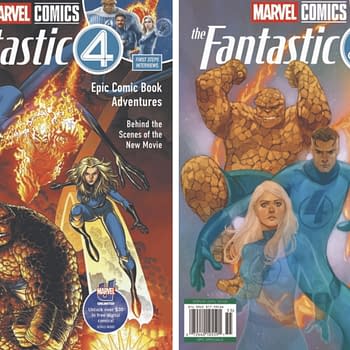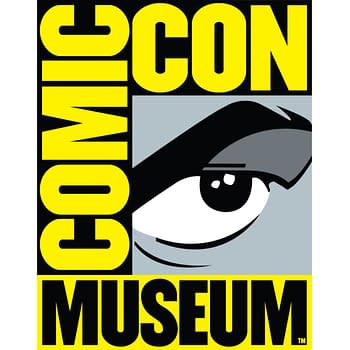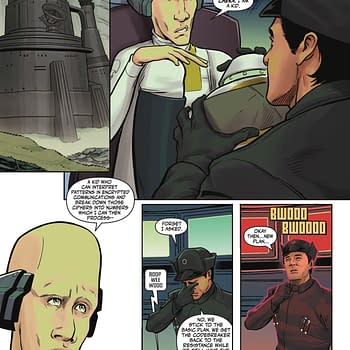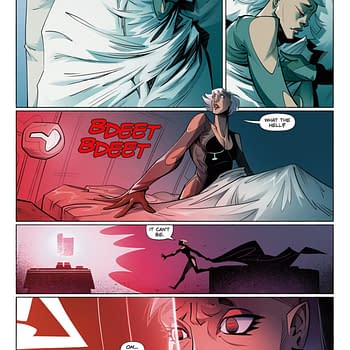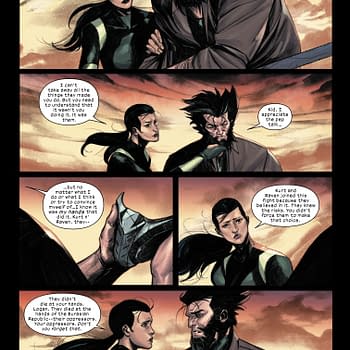Posted in: Comics, Comics Publishers, Current News, DC Comics, Superman | Tagged: jerry siegel, joe shuster
Jerry Siegel Replacing Joe Shuster On Superman Sells For $264,000
Superman first appeared in 1938, created by Jerry Siegel and Joe Shuster, published in Action Comics #1 by DC Comics. But what about before?
Article Summary
- Jerry Siegel's 1934 Superman pitch to Russell Keaton sells at auction for $264,000.
- The original Superman concept was a child from Earth's future, not Krypton.
- Superman was initially rejected multiple times before Action Comics #1 success.
- Letter detailing early Superman origins showcases pivot in comic history.
Superman first appeared in 1939, created by Jerry Siegel and Joe Shuster, published in Action Comics #1 by National Comics – later to be known as DC Comics. And in doing so, created the superhero genre. But it was a long road to publication and was hawked round studio after studio, publisher after publisher for years.
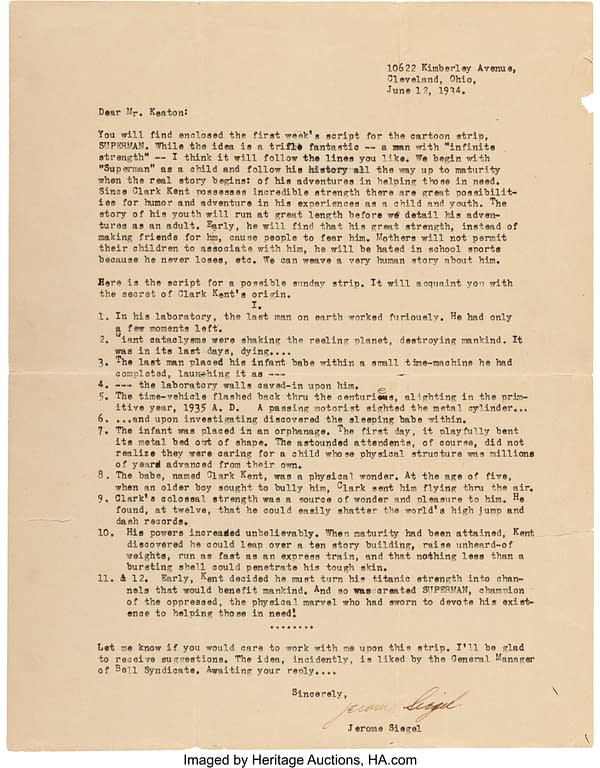
And just sold at Heritage Auctions for the princely sum of $264,000, a pitch for Superman by Jerry Siegel in letter form, setting out how it might work as a newspaper strip, to another artist, Russell Keaton, to draw the strip instead of Shuster – which is exactly what he proceeded to do. But they stil didn't find anyone to publish or syndicate it. Eventually, Siegel gave it another go with Shuster, and was successful, and Keaton was out of the equation. It could all have been so different.
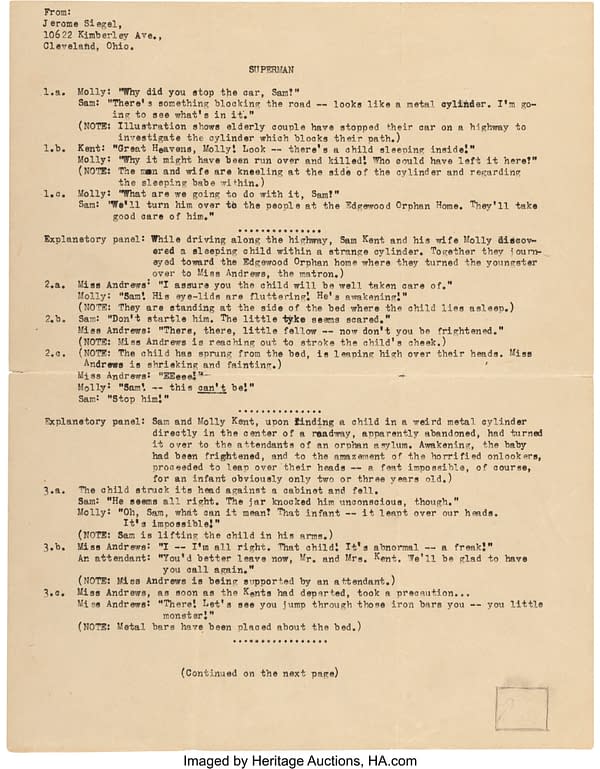
Notably in 1934, there was no Krypton, but Superman was sent from the last days of the planet Earth, back through time. This was a story idea that Grant Morrison suggested to Mark Millar for the Red Son comic book, with the legacy of Lex Luthor eventually becoming the House Of El. Also, the first episode with the toddler Clark Kent being discovered in the time machine, would have been set in 1935, which means Superman would be set in the fifties, then 16 years away.

In this pitch, Clark Kent is brought to an orphanage, but on the first page uses phrases about leaping tall buildings, and running faster than a train. The script shows the couple who found him adopting him, Molly and Sam Kent, as he is too strong for the orphanage to look after him. He also speaks a fluent language of the future even at such a young age…
Jerry Siegel 3-Page Letter to Russell Keaton – On the Origin of Superman (1934). Across these three historic pages, Jerry Siegel outlines the concept for Superman to comic strip artist Russell Keaton in June 1934, nearly four years before Superman's debut in Action Comics #1. Siegel's letter details an origin story both familiar and unfamiliar to long-time Superman fans. A miraculous canister lands on contemporary Earth containing a child of untold strength and ability, a fearful sight for others who will strive through adversity to become "a champion of the oppressed"; the young Clark Kent comes not from Krypton or any alien world, but the cataclysmic far future of Earth, one of the future's supremely evolved humans sent back in a "small time-machine."
In the proposed comic strip, Molly and Sam Kent discover the baby and drop him off at an orphanage before adopting him, with many following episodes detailing his childhood adventures long before becoming the adult "Superman". Siegel's summary and script echo Superman's later origins and retellings across Action Comics, Superman, and the Superman comic strip. While there are many differences, the core concept remains unchanged to this day.
From their earliest meetings in 1932, Siegel and Joe Shuster began workshopping the Superman concept before debuting the character in Action Comics #1 in 1938. This letter comes from the middle of that period, when both creators envisioned Superman as an ongoing comic strip, before the debut of the modern comic book format.
Siegel and Shuster were young unknowns, who had failed to sell the concept to multiple publishers including Consolidated Books and the Bell Syndicate, while Russell Keaton was an experienced artist, known for his work drawing Buck Rogers and Skyroads comic strips.
Siegel sought Keaton as an alternative partner for his budding creation, certain that an established artist would lead to greater cachet and a published strip. Keaton would go on to draw two weeks' worth of strips based on this letter, which were also rejected by newspaper syndicates, leading Siegel and Shuster to reunite and further refine the Superman concept. In June 1935, Siegel and Shuster would begin working for the budding comic publisher National Allied Publications, where the pair debuted Superman in 1938. While Siegel and Shuster were relative unknowns in the mid-1930s, today renown far exceeds that of Russell Keaton. This letter offers an incredible window into the history of comics, showcasing a major turning point in the development of both the superhero and modern pop culture.
The letter was typewritten on three separate pieces of paper, with the opening page hand signed in the lower margin. Creasing, minor holes, tears, and chips, toning, and handling wear. In Very Good condition.
From the Denis Kitchen Collection.









